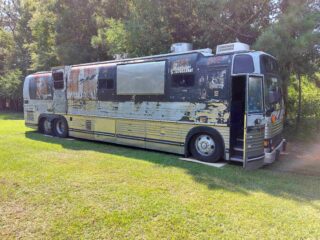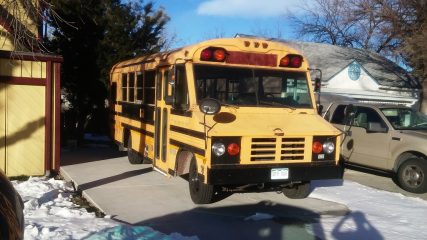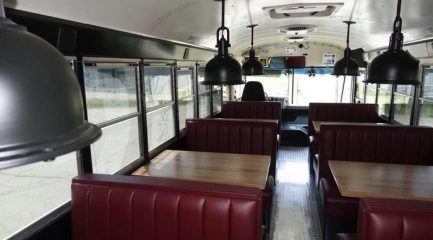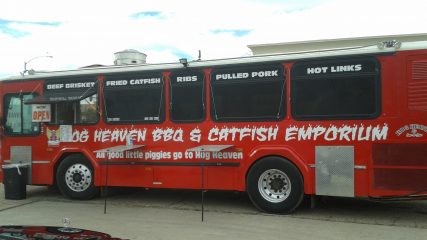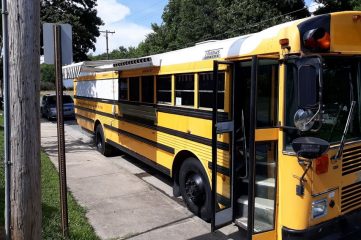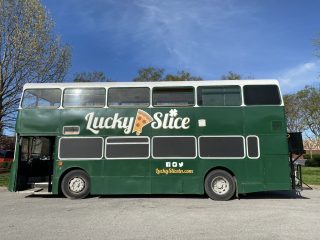Skoolies (AKA converted school buses) are being transformed into all sorts of practical uses, including motorhomes and mobile food units. We offer a variety of used converted and standard issue skoolies are already been converted for a specific use.
Each of Skoolie is available for sale direct by the owner. In each listing, you will find photos, installed equipment when applicable, mileage, location, and contact information for the owner. Browse our active listings below.
ACTIVE SKOOLIE LISTINGS
- 1987 Prevost Food Bus – State of the Art Rolling Kitchen with Huge Potential (Asking: $55,000)
- 91 Leyland Olympian Pizza Bus for Sale in Brentwood, TN (Asking: $90,000)
- Thomas Built Bus with Mobile Kitchen in North Carolina (Asking: $60,000)
- 2011 International Bustaurant for Sale in Orange County, CA (Lowered Price from $99,000)
- Unique Blue Bird Bus Food Truck in Aurora, CO (Asking: $35,000 OBO)
Check back this page regularly for more bus listings. We add new inventory every single week.
Learn More:
- What is a Skoolie Bus?
- Things to Consider Before Buying a Used Skoolie Bus
- Dog Nose VS Flat Nose Bus: What’s the Difference?
- Specific Areas To Inspect on a Skoolie Before You Buy
What Is a Skoolie Bus?
A “skoolie” is a slang term for a converted school bus. The name started when people started converting old buses into mobile homes and RVs. Eventually, people started to experiment with food Skoolies that are basically food trucks on a bus.
Skoolies have become extremely popular for shaved ice vendors, but have also been utilized by just about every type of food concept including mobile crepe shops like The Boiler Monkey based out of Albuquerque, New Mexico. Check out the before / after conversion of their food bus below.
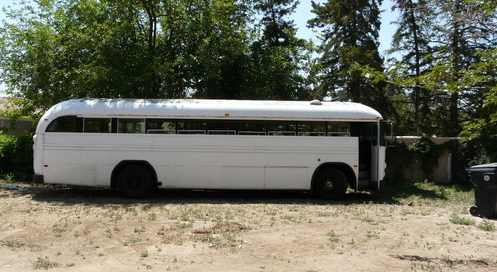
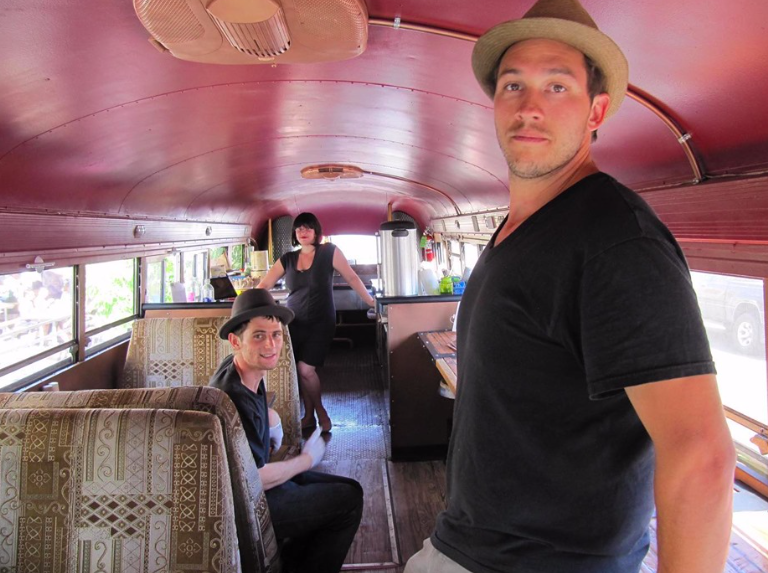
One distinct advantage of converting a bus into a food unit is that you can offer customers indoor seating. That’s exactly what the The Boiler Monkey did with their unit as you can see from the photo above. Another advantage of going this route for a food business is that you’ve got a lot more space compared to a truck to make a larger kitchen or store supplies.
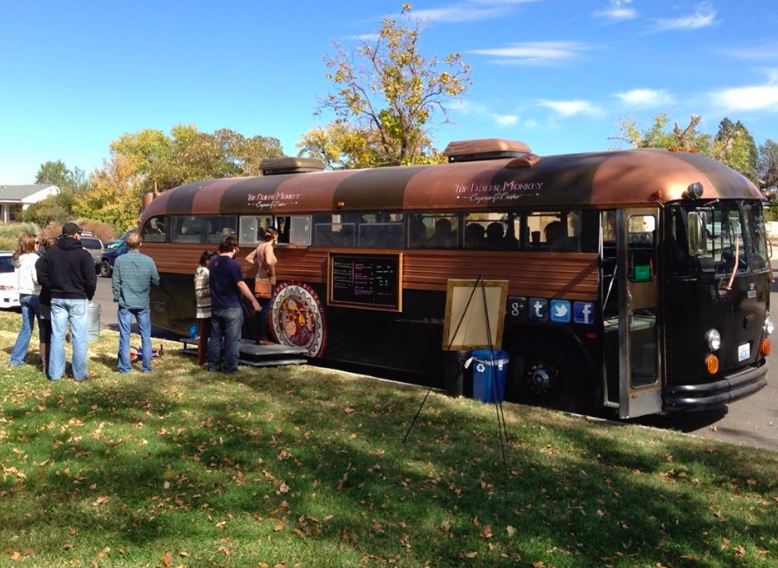
This can help you maximize profits at busy events since you can sell more product. The additional space will also make things easier for you and your staff working on the truck too.
Things to Consider Before Buying a Used Skoolie Bus
As with any major purchase there are important considerations you need to making before purchasing a skoolie. Here are some pointers to keep in mind before pulling the trigger on a unit.
Get Clear on Your Goals
The first step before going out there and buying the cheapest bus that’s on the market that seems to be in decent condition is to get super clear on your goals for the vehicle.
Do you want something that drives easier in a city? A shorter Type A bus is probably all you need. The turning radius on a 35 or 45 foot bus is not like driving your minivan… More like an 18 wheeler. Something to keep in mind because there is a learning curve.
In the same vein if you plan to live the true bus life and go camping in it, most national parks in the United States won’t allow you to take a 45-foot bus inside the grounds. Personal preferences are important as well. Only you know how much space you can comfortably live in full or part-time.
Do you plan to convert this into a rolling restaurant? Then figuring out what cooking equipment you need to install will be a requirement so that you purchase something the right size.
After figuring out what it is that you want, it will help you refine your search significantly. Instead of searching Craiglist or Facebook aimlessly for any old bus, you’ll already know the frame and chassis size of the ideal bus.
Pro Tip: One important thing to note is that on Skoolie forums you’ll often hear people reference that the bus has 13 windows (counting only the windows behind the driver) or can seat 71 passengers. These all are loose references to the length of the particular unit.
Determine Length and Body Style
There are four types of school buses that you’ll find most often called class a – d buses Easy enough to remember right?
Class A: When people think of the short bus this is what they’re talking about. These buses are designed to carry more than 10 people. The driver’s side door is always located on the left side of this vehicle and has a cutaway front section.
There are two sub-categories of this kind of bus where weight of the vehicle of the primary distinction. Type A-1 buses have a gross vehicle weight under 10,000 pounds. Type A-2 busses have a gross vehicle weight over 10,000 pounds.
Class B: These buses weigh over 10,000 pounds and are designed to carry more than 10 passengers. The engine is installed under the windshield and next to the driver’s seat. These vehicle is built on a front vehicle chassis.
Class C: This is your standard issue bus. This is probably the bus you road to middle or high school on. These will hold around 71 passengers and be 38 – 40 feet in length.
Class D: Class D vehicles are the largest of this classification of bus. Keep in mind that before you purchase one of these units, you may not be able to take the vehicle everywhere you would like to be including national parks. From an ease of use perspective, they are also more difficult to drive and park in urban settings.
The Class D bus is classified as a transit-style vehicle, meaning it’s manufactured with public transportation in mind. The gross vehicle weight is over 10,000 pounds and will hold more than 10 passengers.
Class D Engine Classifications:
The engine of this bus will be located in a different position of the bus depending on the model / year.
- RE: Rear engine
- FE: Forward engine
- FC: Forward control
Note: Each of these school buses meets or exceeds the Federal Motor Vehicle Safety Standards requirements.
Dog Nose VS Flat Nose Bus: What’s the Difference?
This refers to the body style of the bus. As with many things, it’s easier explained in a photograph than words. Here’s an example of what is considered a dog-nose (conventional) style bus. The most noticeably aspect of this style is the protruding engine.
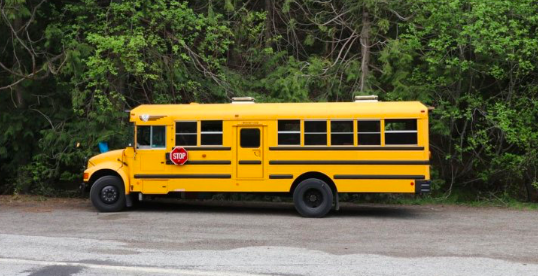
On the flip-side, here’s what a flat-nose bus looks like. Notice the flatter front? That pretty much says it all. See image below.
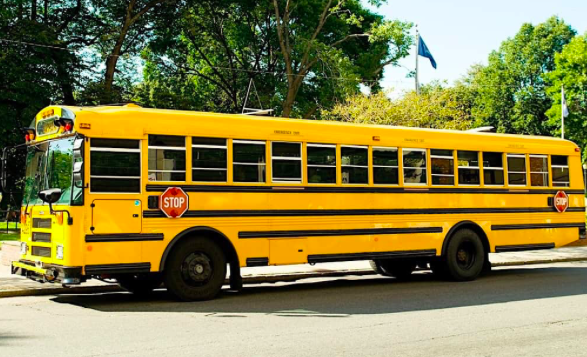
Specific Areas To Inspect on a Skoolie Before You Buy
Here’s a fantastic video by the YouTube Channel Navigation Nowhere. In this video, the host walks you through the process of inspecting a school bus and shares the exact things he looks at before making a purchase.
In this video you’ll find specific areas of the truck to inspect and what to look for. Key highlights from the video include:
- Visit in Person: Make sure to inspect all buses in person before purchasing. Never buy any vehicle site unseen. Anything can appear to be in good condition online, but you won’t know for sure before you turn it on.
- Look Under the Hood: Make sure the engine appears cleanish. Turn on the engine and listen for any clinging or sounds that you wouldn’t anticipate.
- Inspect Underneath the Bus: Yes, actually crawl underneath the bus before the purchase. This is the only way you can identify damage or excessive rust on the unit.
- Take Down the VIN: The vehicle identification number can be found on the differential located underneath the bus or on the engine. After you find the bus VIN then enter that information into a decoder here to identify if it has been involved in an accident. If you discover the vehicle has been involved in an accident and the owner didn’t disclose this information, beware of buying this bus.
- Tires: Check the air pressure on all tires. Determine if the tread is still sufficient to operate and estimate how long they will last. You can use this information to negotiate a lower price as a tactic as well.
Watch the instructional video at least two times to get a sense of all the elements you’ll want to inspect. For the most part, you don’t need to worry to much about the interior of the unit assuming you’re planning to gut it and convert it into a food unit or RV.
Click here to find more food trucks for sale.

